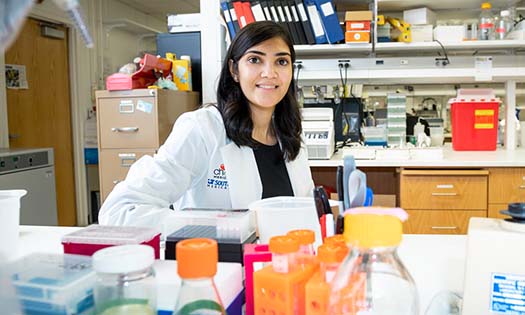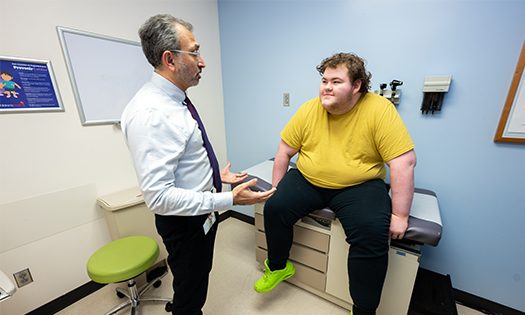Pediatric Fatty Liver Disease: A Silent and Growing Concern
Nonalcoholic fatty liver disease (NAFLD) has rapidly become the most common cause of liver disease in children, overtaking viral hepatitis, congenital disorders and inherited conditions. In the United States, the prevalence of NAFLD in children rose from 3.9% during the period spanning 1988 to 1994, to 10.7% in the period between 2007 and 2010.
The main driver? Rising obesity rates.
“Children affected by obesity have a 38% chance for developing fatty liver disease,” says Charina Ramirez, M.D., Pediatric Gastroenterologist at Children’s Health℠ and Associate Professor at UT Southwestern. “Since obesity is an epidemic on its own, fatty liver disease mirrors that.”
A Ticking Time Bomb: Progression to Nonalcoholic Steatohepatitis and Beyond
In 5% to 10% of patients, the disease develops into nonalcoholic steatohepatitis (NASH), a condition in which the liver becomes inflamed. Left untreated, NASH can progress to fibrosis and cirrhosis, which can become irreversible. So far, progression to cirrhosis is rare in kids, but the real dangers lay further down the road.
“According to a study by Dr. Naim Alkhouri, these patients may not receive liver transplants when they're children or adolescents, but instead between the ages of 18 and 40. This is still considered young for a liver transplant,” Dr. Ramirez says.
The epidemic’s true burden will mostly be felt when children with NAFLD become adults.
“Fatty liver disease is the gateway to metabolic syndrome—type 2 diabetes, high blood pressure, high cholesterol, and eventually heart attack and stroke,” Dr. Ramirez says.
Early NAFLD Diagnosis is Necessary—and Challenging
Early diagnosis and treatment are important, which is challenging because NAFLD is often asymptomatic until fibrosis or cirrhosis has occurred. The North American Society for Pediatric Gastroenterology, Hepatology and Nutrition recommends that children between 9 and 11 years old with obesity (or with a family history of fatty liver disease) should be screened using an alanine aminotransferase (ALT) test. If elevated ALT levels are detected and persistently elevated, children will need additional tests to determine whether fatty liver disease or other underlying liver pathology is present.
At Children’s Health, we use hepatic ultrasounds to evaluate for anatomical causes and MRI liver for fat fraction, as well as elastogeaphy to quantify fat in the liver and determine the presence and extent of fibrosis. If a biopsy is needed, we offer endoscopic ultrasound-guided liver biopsy—a procedure that offers no incisions and faster recovery.
At the Forefront of Treating NAFLD
Exactly how triglyceride accumulation causes fibrosis and hepatocellular injury is unknown.
“It's still a black box,” Dr. Ramirez says.
Researchers at UT Southwestern are investigating NAFLD’s genetics and exploring dietary influences on hepatic triglycerides. The team at Children’s Medical Center Dallas and UT Southwestern is part of a multicenter study examining the disease’s natural history and identifying patient groups best suited for potential pharmaceutical interventions.
Currently, there is no approved medication for pediatric NAFLD. In Dr. Ramirez’s view, this can be a positive. The liver can regenerate, and NAFLD’s progression can be halted or even reversed by adopting a healthier diet and committing to regular exercise.
At Children’s Health, we bring together GI specialists, dietitians and a psychologist to treat children from every angle. Our nutrition clinic offers personalized counseling around diet and lifestyle changes.
For example, Children’s Health has teamed up with the YMCA for the Get Up and Go program, which is a 10-week weight management program for patients and their families. In the summertime, children with obesity can attend Kamp K’aana, which is a two-week summer camp for children ages 10 to 14 who need weight management help.
Bariatric surgery is also available for patients who struggle with weight loss. And, while the goal is to avoid liver transplantation, Children’s Health has a renowned transplant team, comprised of UT Southwestern surgeons and board certified hepatologists, to care for patients who progress to advanced liver disease.
“Our patient population is starting to see the dangers of fatty liver disease,” Dr. Ramirez says, “When we allow the child to choose the healthy goal and hold him/her accountable every three to four months at the clinic visit, BMI stabilization can be achieved. Consistency in healthy eating and increased activity will eventually lead to resolution of NAFLD.”
Learn more about the Children’s Health NAFLD program
Related podcast
Learn more about treating NAFLD on the Pediatric Insights podcast


